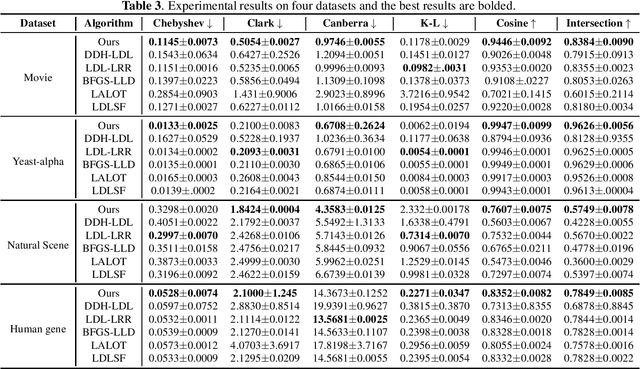Liancheng Xu
Unbiased and Robust: External Attention-enhanced Graph Contrastive Learning for Cross-domain Sequential Recommendation
Oct 17, 2023



Abstract:Cross-domain sequential recommenders (CSRs) are gaining considerable research attention as they can capture user sequential preference by leveraging side information from multiple domains. However, these works typically follow an ideal setup, i.e., different domains obey similar data distribution, which ignores the bias brought by asymmetric interaction densities (a.k.a. the inter-domain density bias). Besides, the frequently adopted mechanism (e.g., the self-attention network) in sequence encoder only focuses on the interactions within a local view, which overlooks the global correlations between different training batches. To this end, we propose an External Attention-enhanced Graph Contrastive Learning framework, namely EA-GCL. Specifically, to remove the impact of the inter-domain density bias, an auxiliary Self-Supervised Learning (SSL) task is attached to the traditional graph encoder under a multi-task learning manner. To robustly capture users' behavioral patterns, we develop an external attention-based sequence encoder that contains an MLP-based memory-sharing structure. Unlike the self-attention mechanism, such a structure can effectively alleviate the bias interference from the batch-based training scheme. Extensive experiments on two real-world datasets demonstrate that EA-GCL outperforms several state-of-the-art baselines on CSR tasks. The source codes and relevant datasets are available at https://github.com/HoupingY/EA-GCL.
Towards Lightweight Cross-domain Sequential Recommendation via External Attention-enhanced Graph Convolution Network
Feb 07, 2023Abstract:Cross-domain Sequential Recommendation (CSR) is an emerging yet challenging task that depicts the evolution of behavior patterns for overlapped users by modeling their interactions from multiple domains. Existing studies on CSR mainly focus on using composite or in-depth structures that achieve significant improvement in accuracy but bring a huge burden to the model training. Moreover, to learn the user-specific sequence representations, existing works usually adopt the global relevance weighting strategy (e.g., self-attention mechanism), which has quadratic computational complexity. In this work, we introduce a lightweight external attention-enhanced GCN-based framework to solve the above challenges, namely LEA-GCN. Specifically, by only keeping the neighborhood aggregation component and using the Single-Layer Aggregating Protocol (SLAP), our lightweight GCN encoder performs more efficiently to capture the collaborative filtering signals of the items from both domains. To further alleviate the framework structure and aggregate the user-specific sequential pattern, we devise a novel dual-channel External Attention (EA) component, which calculates the correlation among all items via a lightweight linear structure. Extensive experiments are conducted on two real-world datasets, demonstrating that LEA-GCN requires a smaller volume and less training time without affecting the accuracy compared with several state-of-the-art methods.
Label distribution learning via label correlation grid
Oct 15, 2022



Abstract:Label distribution learning can characterize the polysemy of an instance through label distributions. However, some noise and uncertainty may be introduced into the label space when processing label distribution data due to artificial or environmental factors. To alleviate this problem, we propose a \textbf{L}abel \textbf{C}orrelation \textbf{G}rid (LCG) to model the uncertainty of label relationships. Specifically, we compute a covariance matrix for the label space in the training set to represent the relationships between labels, then model the information distribution (Gaussian distribution function) for each element in the covariance matrix to obtain an LCG. Finally, our network learns the LCG to accurately estimate the label distribution for each instance. In addition, we propose a label distribution projection algorithm as a regularization term in the model training process. Extensive experiments verify the effectiveness of our method on several real benchmarks.
 Add to Chrome
Add to Chrome Add to Firefox
Add to Firefox Add to Edge
Add to Edge